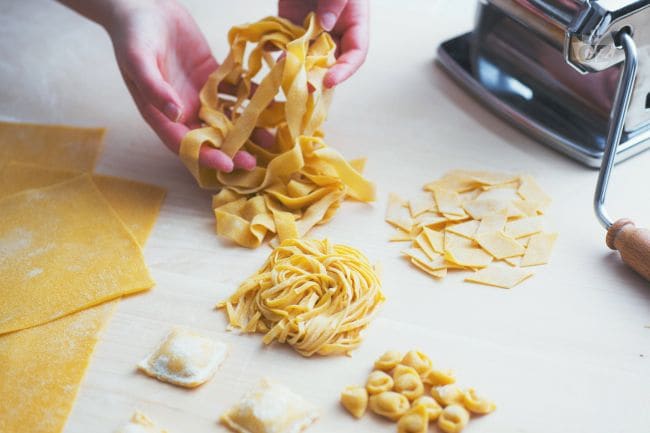1_ Use the pastry board: the roughness of the wood is more suitable than a simple smooth surface
2_ Beat the eggs with a fork when they enter the fountain of flour so that they do not come out.
3_ Salt yes or no? According to Emilian currents, it should not be added to the dough; according to others, however, a pinch of salt would not hurt.
4_ Avoid drafts: it can dry out the pasta
5_ Flour-egg ratio: the classic ratio includes 100 g of flour for each egg. But above all it depends on what you have to prepare.
6_ Processing: the dough must be worked for at least 10 minutes, with energy and with the palm of the hand, occasionally beating it on the pastry board to make it more elastic
7_ Keep the dough that you are not kneading covered to prevent it from drying out.
8_ Flour the work surface: in this way the pasta shapes will not stick to the surface.
9_ If you have to make lasagna, noodles, noodlespappardelle or quadrucci, it is preferable to dry the sheets spread out sprinkled with semolina for a few minutes on each side before folding them into a flat roll.
10_ Eggs or yolks? If you make fresh filled pasta like ravioli or tortellini you can unbalance the doses towards the liquid part. Therefore for about 140 grams of flour add one egg + one yolk. If you make other dry shapes, it’s better to use only the whole egg.


